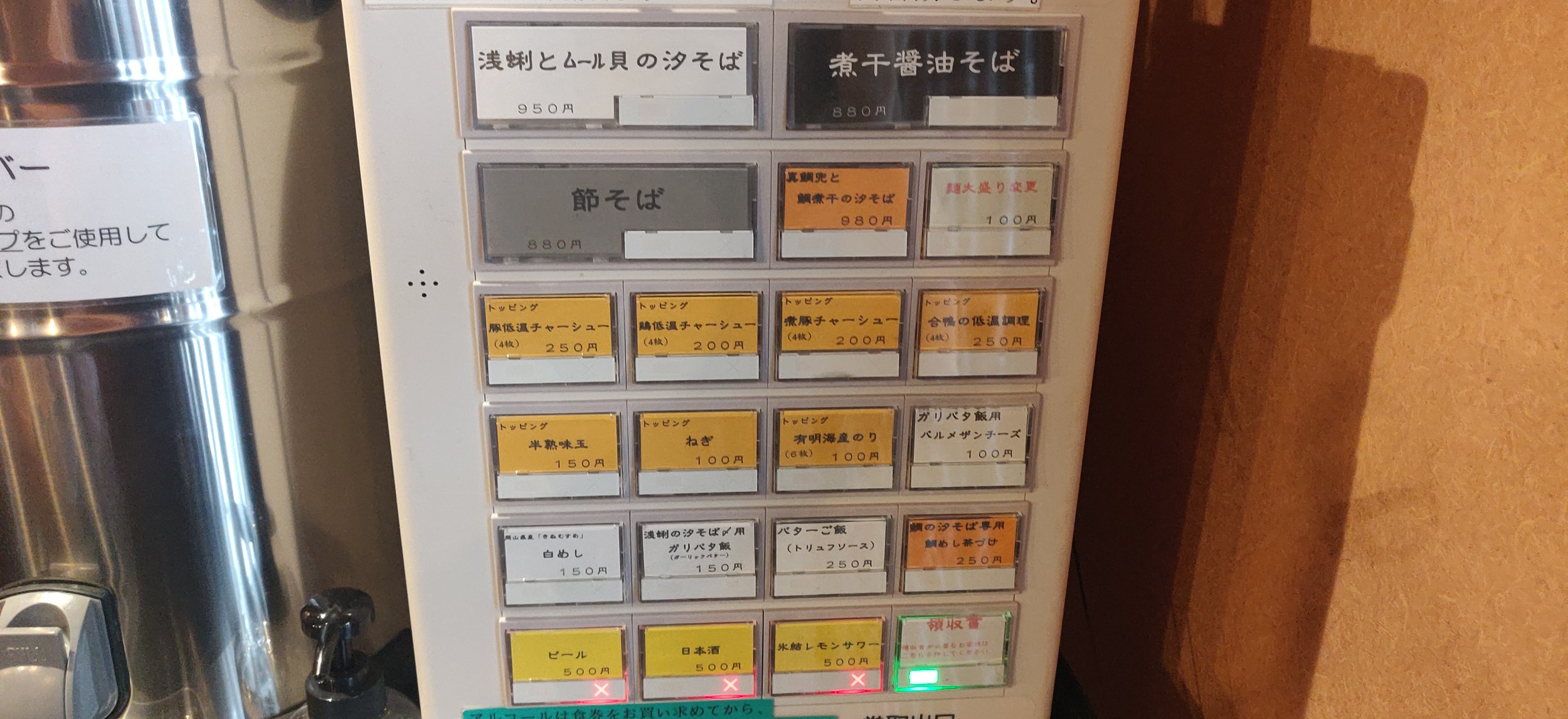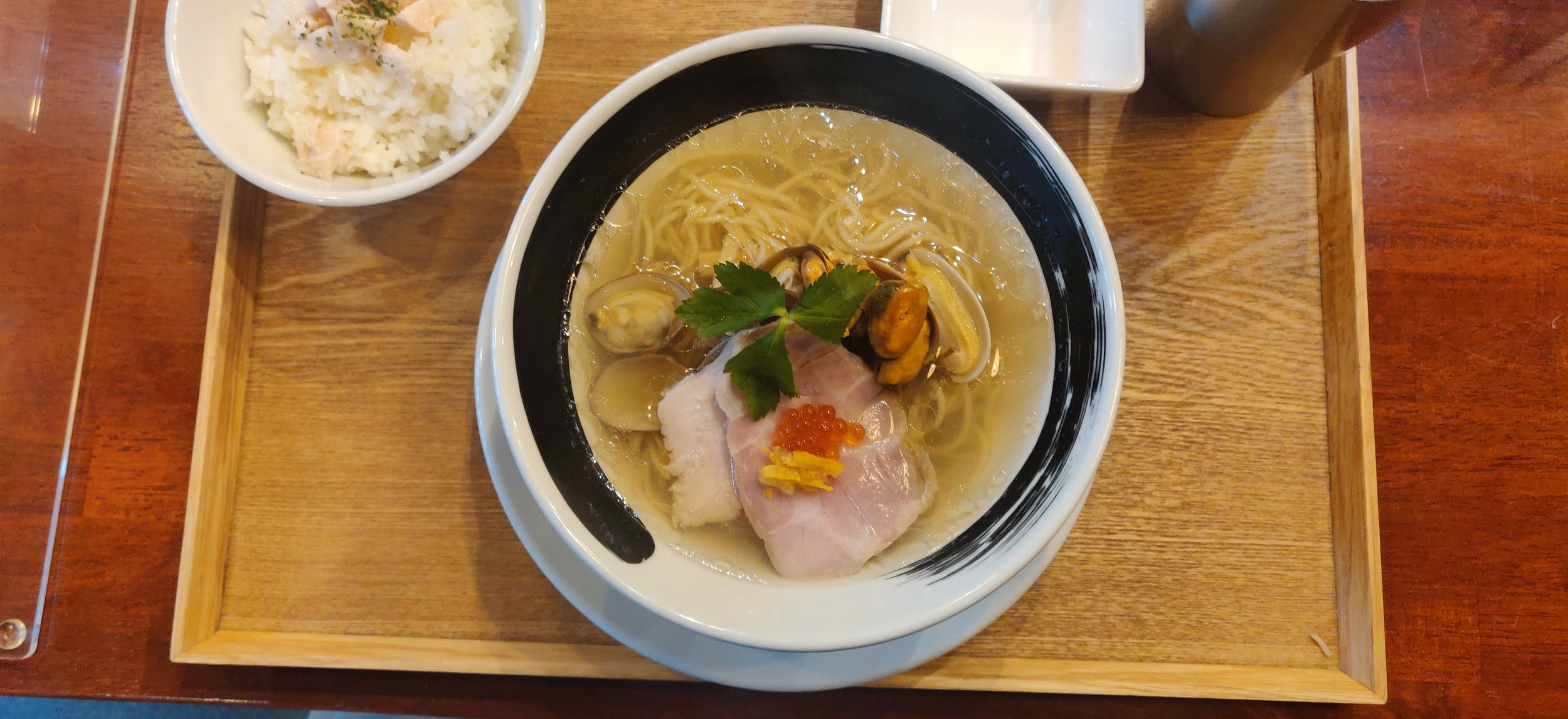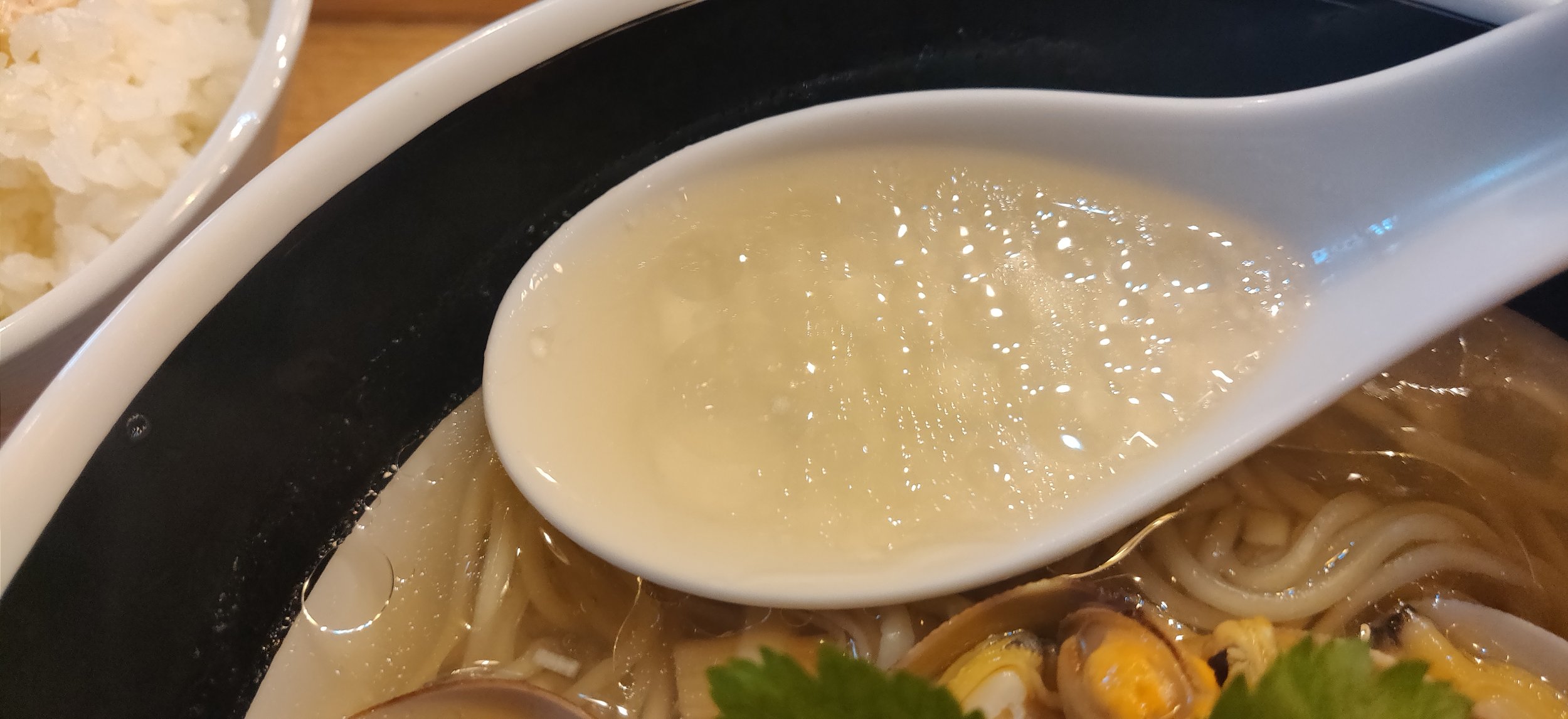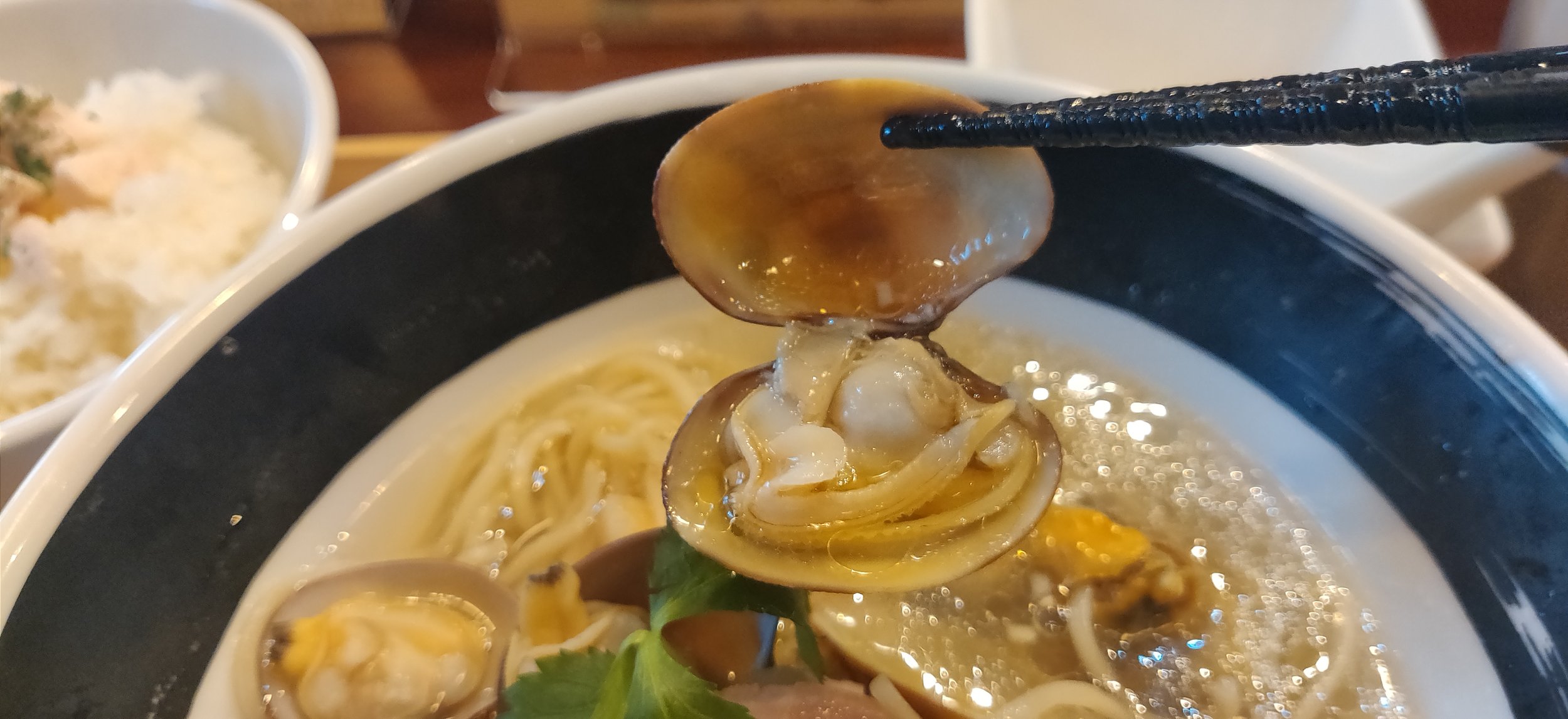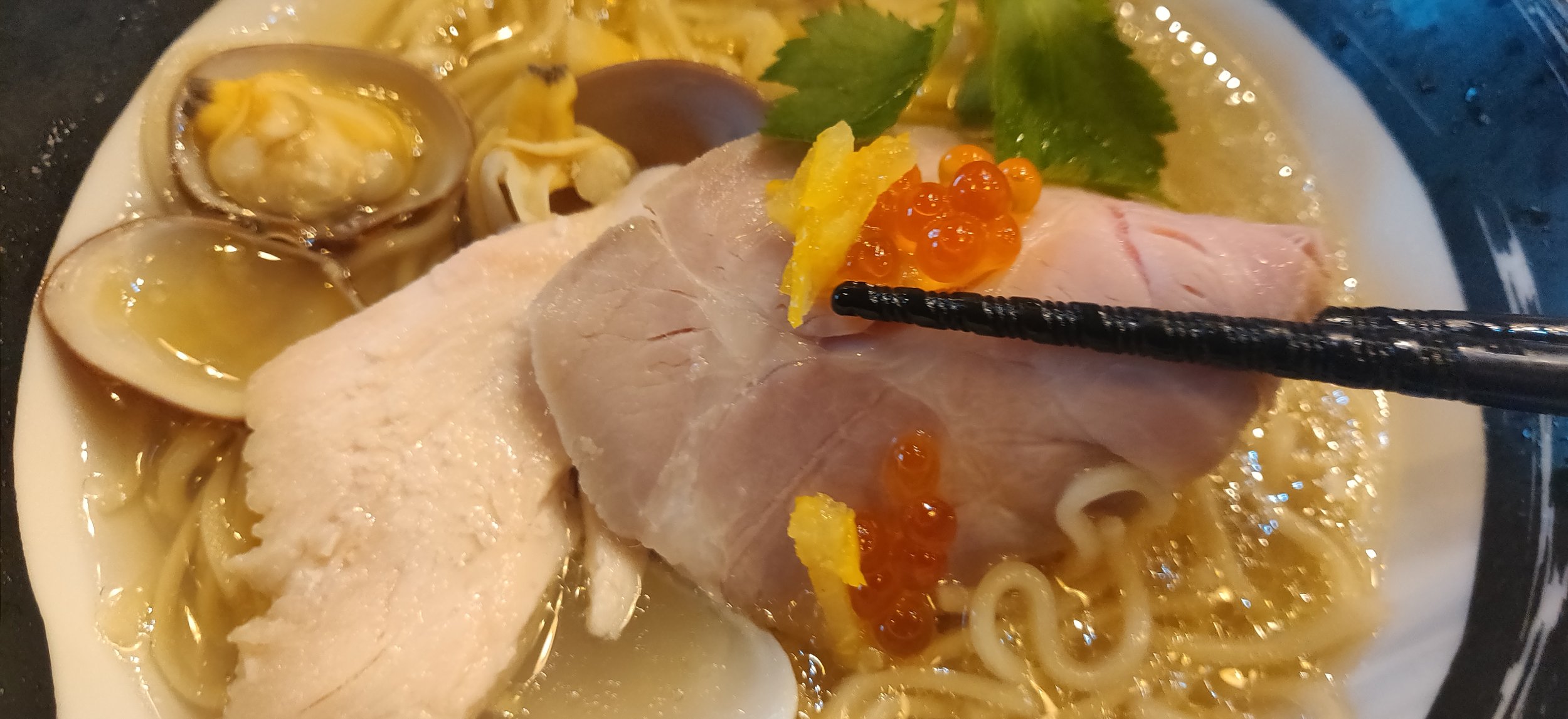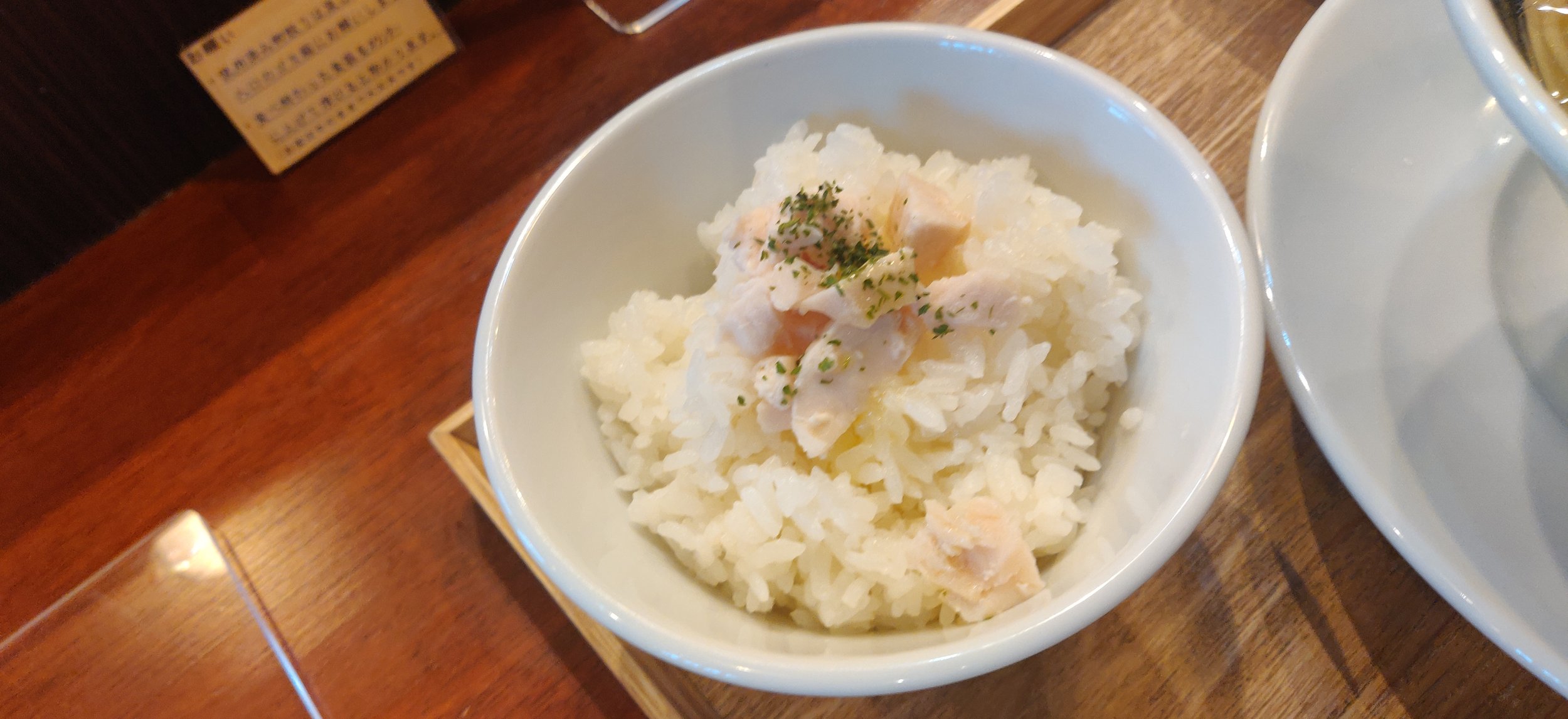Mendokoro Shirokuro (麺処 しろくろ); Awesome Dried Fish/Gyokai-kei Ramen in West Tokyo. Hachimanyama, Tokyo
To give a perspective on how competitive the ramen scene is here in Japan, hundreds, if not thousands of new shops open every year in just Tokyo alone. With that pace it’s literally impossible to visit every new restaurant, yet alone the long established shops I’ve not yet been to. Since the older shops usually tend to take priority, I try my best to make sure the newcomers I do end up eating at are worthy of my stomach space and time, both of which have been rapidly shrinking as I age… Since opening back in 2020, it was borderline impossible to escape the ever growing praise for Mendokoro Shirokuro, appearing in both the Tabelog Top 100 list as well as numerous ramen rankings online. Given it’s ever growing prestige, it was a no brainer that I would wind up making a visit, and I finally made the trek early this year to see if the hype was justified. Located just down the street from Hachimanyama station on the Keio Line, I have to say, Shirokuro definitely was worthy of it’s praise and I was incredibly impressed with their twist on seafood based ramen. Shop is open from Monday-Saturday with a day off on Sundays. They are currently only open for lunch from 11:30-14:00 so be sure to come early. Lines do get quite long and they tend to sell out before 14:00 so plan accordingly.
So unfortunately the shop doesn’t get a lot of foreign clientele so they opted not to have an English menu. I will translate it here. Starting up top is their two main ramen, the Clam and Mussel Shio Ramen on the left in white and the Niboshi Shoyu Ramen on the right. Below in grey is the Bushi Soba using different dried fish and to the right is the Snapper and Niboshi Ramen. To the right of that is the Oomori, or large serving for noodles. On the third row is for the toppings which are braised pork chashu, sous vide pork chashu, sous vide chicken chashu, and pork tongue chashu. Fourth row is again toppings of Ajitama soft boiled egg, negi, nori dried seaweed, and a parmesan cheese topping specifically for the Garlic Butter Rice bowl (on the fifth row). Next row down is a regular rice bowl on the left, a garlic butter rice bowl which can only be ordered alongside the Clam and Mussel ramen, butter rice with truffle sauce, and finally a snapper rice bowl which can be ordered alongside the Snapper and Niboshi Ramen. Final row is the alcohol menu which are beer, Japanese sake, and a lemon sour (lemon juice mixed with shochu, a type of Japanese liquor.
I opted to get the Clam and Mussel ramen with a side of garlic butter rice for this visit, which is pictured above. Visually this was one of the most elegant looking ramen I’ve had this year. I can see why this is so popular on Instagram because the variety of colors in the bowl makes it really shine. Sitting atop my mound of noodles is a sous vide pork chashu and chicken chashu with a small spoonful of ikura salmon roe and slivers of yuzu rinds. A few clams and mussel scatter around the chashu to finish my bowl. Starting with the soup, the broth is entirely pescatarian using only dried fish and shellfish during the steeping process. The aroma oil is also vegetable oil base so if you ask to skip the chashu varieties, is a great spot for someone looking for a meatless ramen option. Soup is very gentle on the touch, but has a full bodied shellfish flavor and aroma which will encapsulate you with every sip. The shio tare brings both a sweetness as well as savoriness to the broth and uplifts each component of the broth. The aroma oil gives the soup a gentle fragrance while also providing a bit of body to give the soup some depth. As far as shellfish based broths go, this was probably one of my favorite in the lighter category. The elegance of the ingredients and refinement in its preparation really made it quite memorable.
Noodles were quite reminiscent of a lot of the trendy, new school chuka soba restaurants that’s been popping up as of late. The strands were a tad thicker than some places, but had the same slurpability making for some satisfying bites. I thought it soaked the soup up nicely and paired quite well with the soup as it didn’t have an overly strong flour aroma when you bit in to them. Rather than having a memorable noodle, Shirokuro opted to let the broth be the main attraction and it was a fine decision in my opinion as the gentle broth may have been masked with a stronger aromatic noodle.
As you may have noticed when I translated the menu, there is no tokusei, or extra topping, version of this bowl so what you see is the normal ramen. Shirokuro was quite generous providing two chashu varieties in the chicken and the pork as well as a fair amount of mussels and clams. The mussels wasn’t as impactful as I thought it would be, but the clams more than made up for it accentuating the shellfish flavors of the broth. Chicken and pork chashu provided some meatiness and substance to the bowl and I appreciated their tame flavor profile, again, letting the soup be the star of the show. I thought the yuzu rind was a bit out of place as I didn’t think it needed that citrus hit, but it wasn’t overly distracting either. The ikura, salmon roe gave it an extra hit of ocean brine to the soup, but as with the yuzu, I didn’t think it was entirely necessary. However, overall, I thought the topping selections were incredibly generous for the 950 yen price point and everything was well balanced so no complaints.
I ended up finishing my meal with the garlic buttered rice made specifically to pair with this ramen and I have to say, it was definitely worth the extra 250 yen. I had it both as is and with soup poured over it like a ochazuke, Japanese style porridge and it was absolutely divine. Perfect way to polish off the last remaining spoonful of soup and filled me up just enough to leave full, but not stuffed.
While it is a bit out of central Tokyo, I think it is worthy of a visit if you’re looking for something a bit special and unique. There are a number of shellfish based ramen shops opening up recently, but Shirokuro is definitely among the best of them, probably ranking in my top 5 for the style. If you do end up visiting, be sure to tag me on Instagram @ramenguidejapan and let me know what you think, or comment below. Enjoy!

